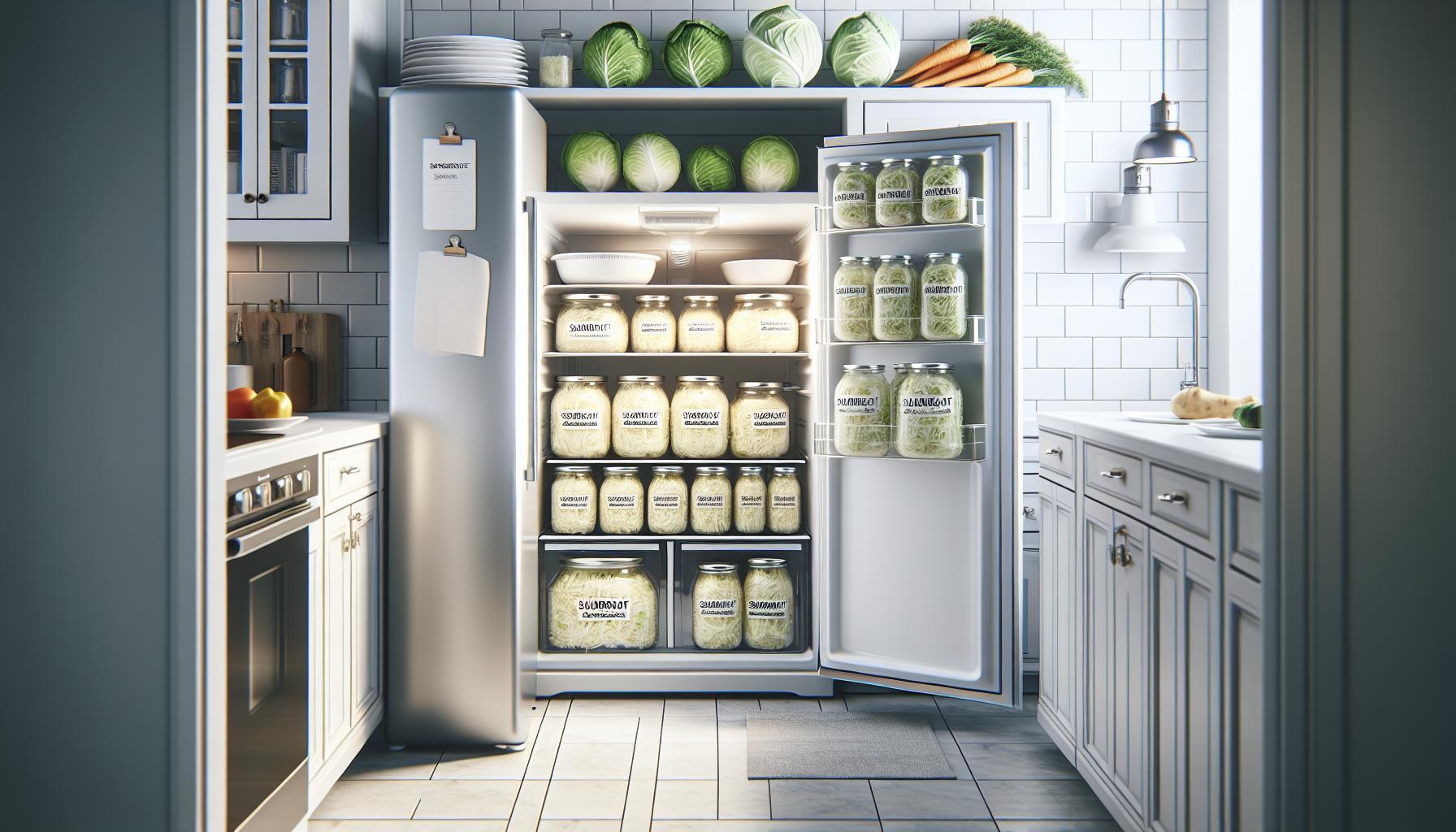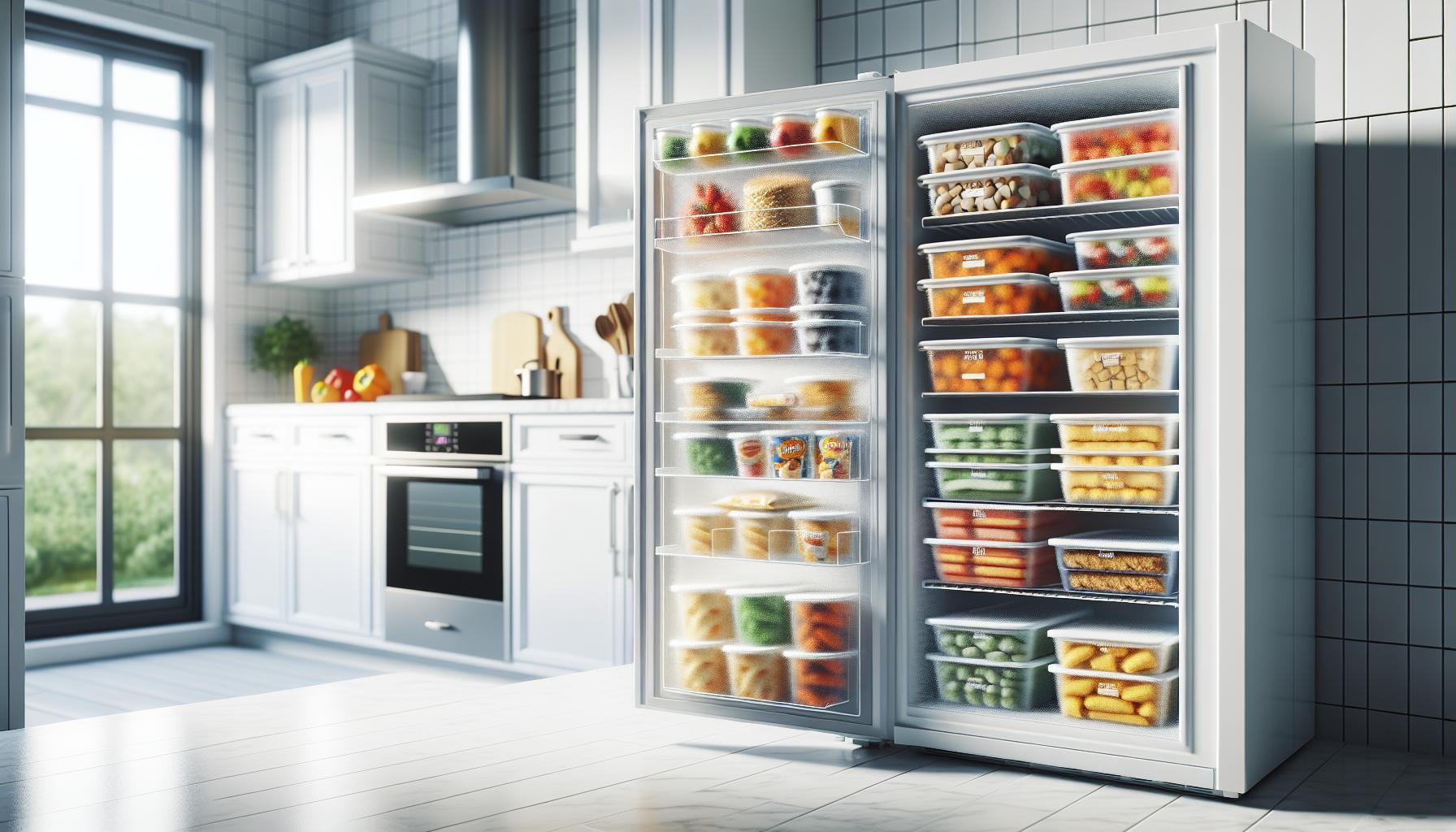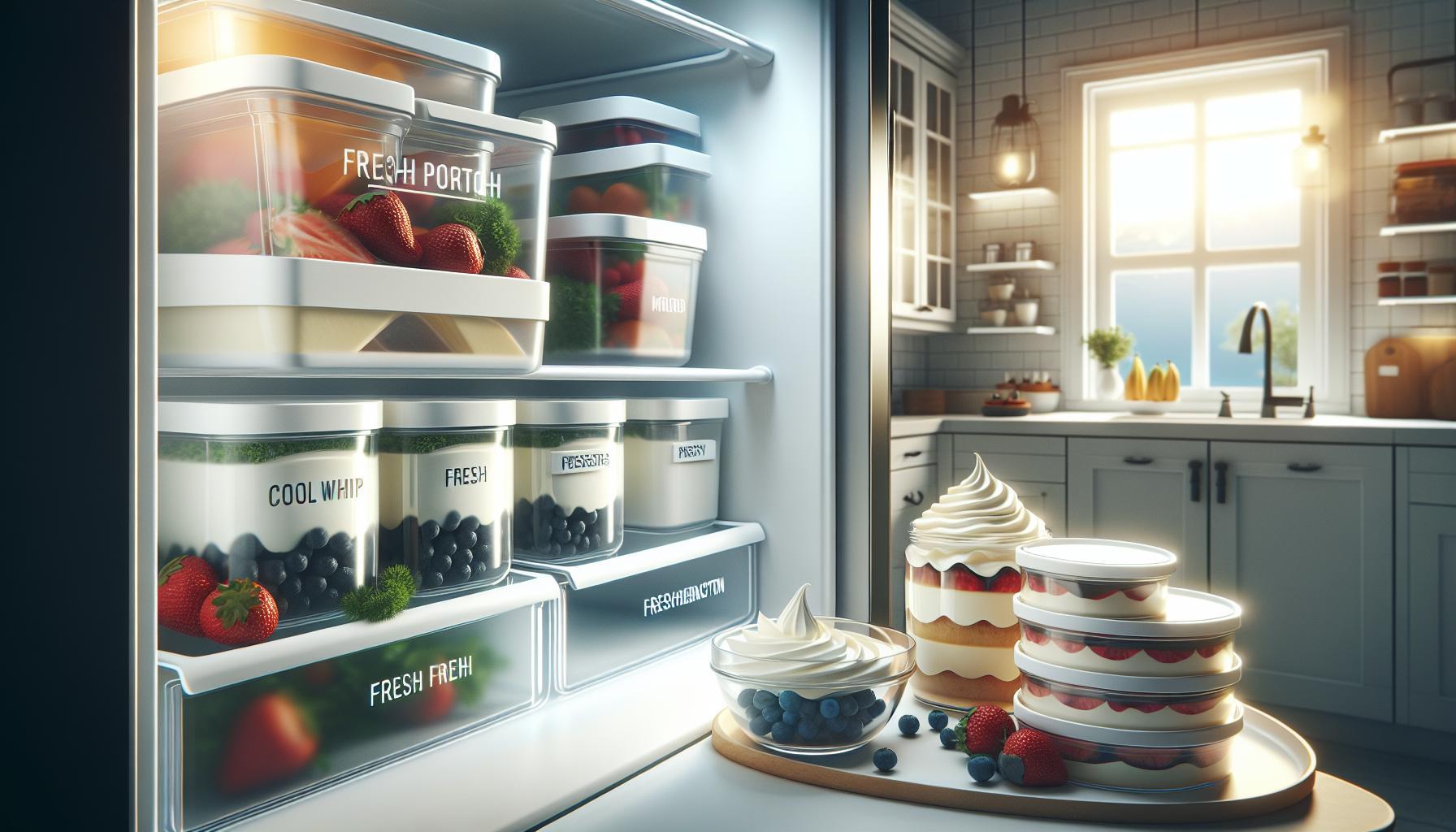When hunger strikes and convenience is key, Hot Pockets can be a lifesaver. But how long can you keep these tasty snacks in the freezer without compromising their quality? Understanding the right storage times is crucial to enjoy your Hot Pockets safely and deliciously.
Improperly stored food can lead to wasted meals and even foodborne illnesses, so getting it right is essential. In this article, we’ll explore the ideal freezing times for Hot Pockets, how to identify any signs of spoilage, and practical tips for safe snacks. Armed with this knowledge, you can ensure that your meals are both safe and satisfying, ready to satisfy your cravings whenever the moment strikes. Keep reading to learn all the essential tips for storing Hot Pockets effectively!
Understanding Hot Pockets Shelf Life in the Freezer
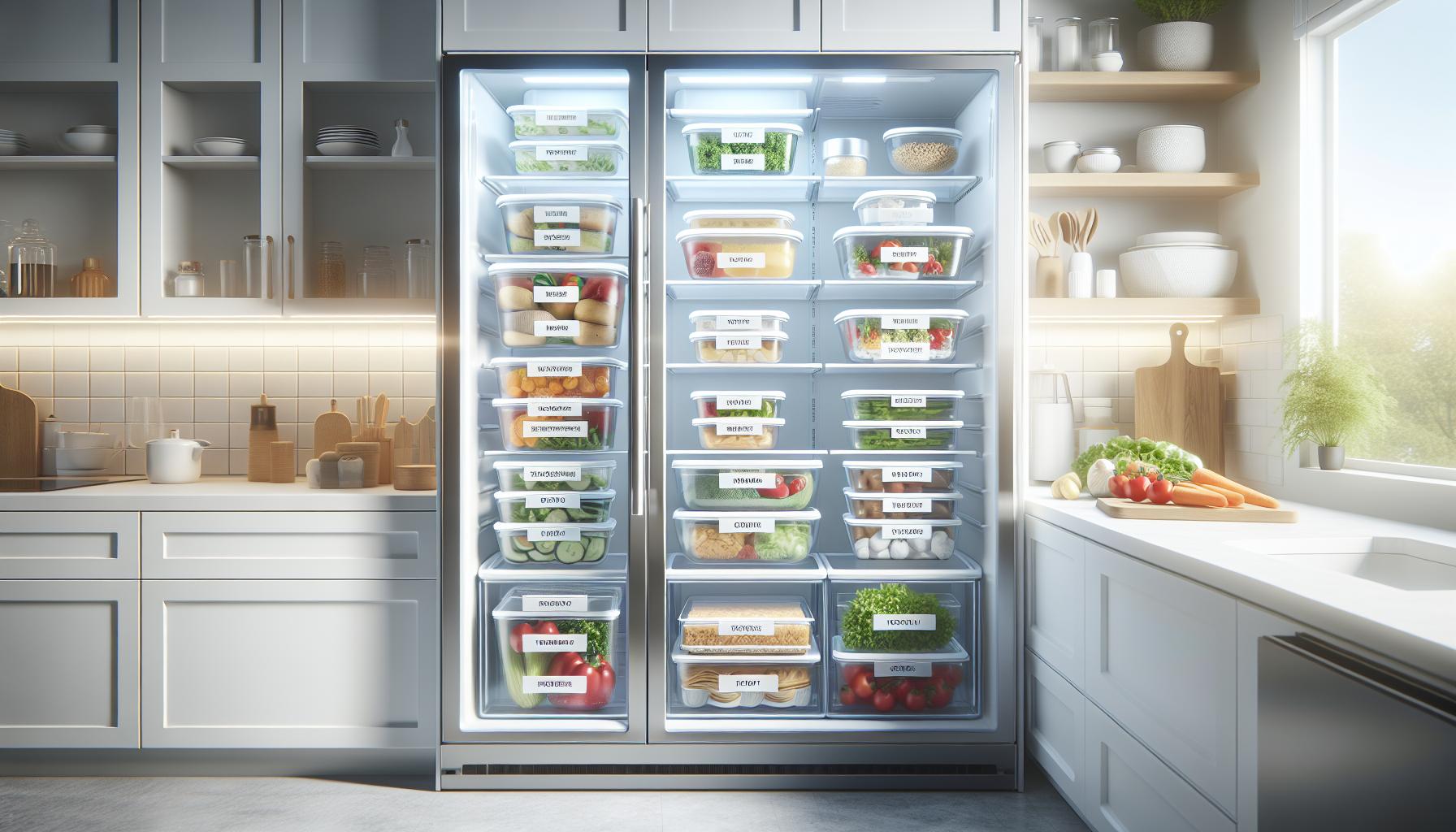
Maintaining a proper understanding of how long Hot Pockets can last in the freezer is critical for enjoying these convenient snacks safely and deliciously. When stored correctly, Hot Pockets can typically be kept in the freezer for up to 14 months without losing quality. However, it’s essential to remember that this duration is not an expiration date; rather, it signifies the period in which the product maintains its optimal taste and texture. Beyond this timeframe, while the Hot Pockets may still be safe to eat, the flavor and texture may noticeably decline.
To maximize the shelf life of your Hot Pockets, first ensure they are kept in their original packaging until ready to use. If you prefer to transfer them, consider wrapping them tightly in aluminum foil or plastic wrap, and then placing them in an airtight freezer bag. This method minimizes exposure to air, which can lead to freezer burn-an unpleasant condition that can alter the taste and texture of the food. Always label your storage bags with the date of freezing to keep track of how long they’ve been stored.
It’s also worth noting that while Hot Pockets can last a long time in the freezer, the ingredients inside can affect their longevity. Meat-filled varieties might degrade quicker due to the nature of perishable proteins, while vegetarian options may maintain their quality for a bit longer. Therefore, always check the packaging for any specific expiration or best-by dates provided by the manufacturer, which can offer additional guidance for safe consumption.
In summary, by understanding the ideal freezer storage techniques and keeping an eye on the shelf life of your frozen Hot Pockets, you can ensure that they remain a quick and tasty meal option.
Proper Freezer Storage Techniques for Hot Pockets
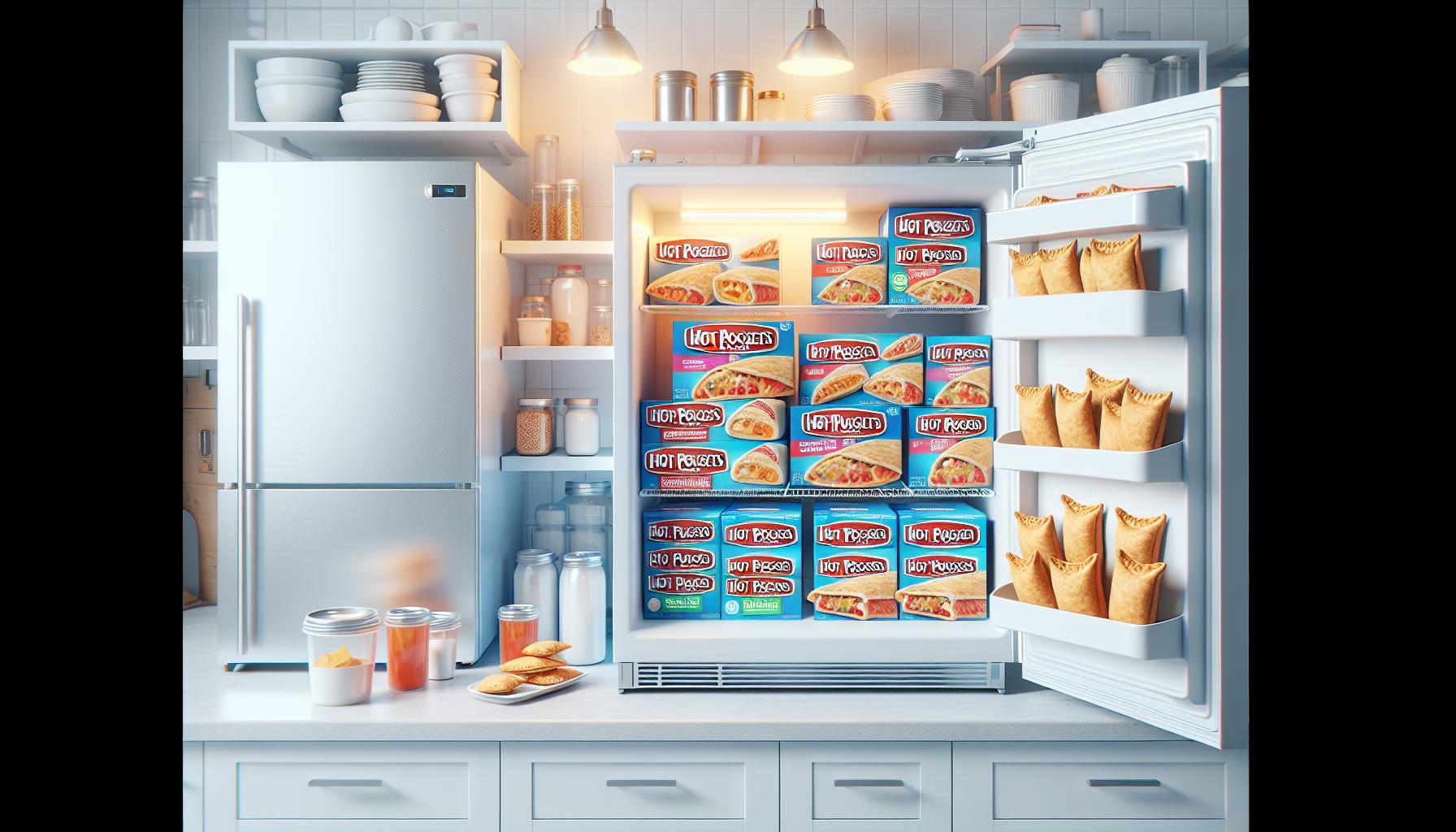
To ensure that Hot Pockets maintain their delicious flavor and texture throughout their time in the freezer, effective storage techniques are essential. Properly storing them not only extends their shelf life but also safeguards against freezer burn and nutrient loss. By adhering to some straightforward guidelines, you can enjoy these convenient snacks safely.
Begin by keeping Hot Pockets in their original packaging until you’re ready to use them. This packaging is designed to protect them from external elements and is usually freezer-safe. If you’ve purchased a larger quantity or wish to prevent any potential exposure to air, consider transferring them to additional protective measures. Wrapping each Hot Pocket individually in aluminum foil or plastic wrap is a great way to create an airtight barrier. After wrapping, place them in an airtight freezer bag labeled with the date of storage to keep track of freshness. This extra layer of protection helps minimize the risk of freezer burn, a common issue that compromises flavor and texture.
Storage Tips
- Keep Original Packaging: Use the packaging as your first line of defense against air exposure.
- Wrap for Extra Protection: Use aluminum foil or plastic wrap for individual wrapping.
- Use Airtight Bags: Store wrapped Hot Pockets in airtight freezer bags.
- Date Your Storage: Always label bags with the date to monitor how long they’ve been frozen.
It’s also wise to organize your freezer to allow for optimal circulation. Avoid overcrowding, as adequate airflow helps maintain a consistent temperature, reducing the chances of uneven freezing. Position Hot Pockets towards the back of the freezer, where it tends to be the coldest, ensuring they stay frozen solid.
By implementing these practical storage methods, you’ll not only preserve the quality of your Hot Pockets but also make snack time more convenient. A well-organized freezer not only saves you time but ensures you can enjoy your favorite flavors whenever you crave them.
Best Practices: How to Freeze Hot Pockets
When it comes to freezing Hot Pockets, a little extra care can go a long way in preserving their taste and texture for future enjoyment. While Hot Pockets are a convenient snack, improper freezing can lead to freezer burn and diminished flavor. To help you freeze these treats effectively, adhere to some best practices that ensure you can enjoy them at their best later on.
Start by keeping the Hot Pockets in their original packaging until you’re ready to freeze them. The packaging is designed to protect them during freezer storage. For maximum freshness, especially if you plan to keep them in the freezer for more than a couple of weeks, consider wrapping each Hot Pocket individually in plastic wrap or aluminum foil. This adds an extra layer of protection against moisture and air exposure.
Once wrapped, place the Hot Pockets in an airtight freezer bag. It’s a good practice to label the bags with the date of freezing to keep track of storage time. Hot Pockets can maintain their best quality for about 2 to 3 months in the freezer, although they remain safe to eat beyond that timeframe, they may lose some of their appealing flavors and textures.
To optimize the freezing process, position the Hot Pockets toward the back of the freezer, which is typically the coldest area. Avoid overcrowding your freezer to promote proper airflow, as it helps maintain an even temperature and prevents any unwanted thawing. By employing these straightforward techniques, you can ensure that your Hot Pockets are safely frozen and ready to satisfy your cravings whenever they arise.
Signs Your Hot Pockets Are No Longer Safe to Eat
Although Hot Pockets can be a convenient meal choice, it’s crucial to recognize when they may no longer be safe to consume. Visual checks and sensory evaluations are your primary tools for assessing the edibility of frozen Hot Pockets. Here are some key indicators that suggest it’s time to discard them.
First, look for freezer burn, which appears as gray or white patches on the surface of the Hot Pocket. While freezer-burned food is safe to eat, it can significantly affect taste and texture. Additionally, if the packaging is damaged or has developed holes, moisture can seep in, exposing the Hot Pockets to the air and leading to spoilage.
Next, when you unwrap the Hot Pockets, check for any off smells. Fresh Hot Pockets should have a pleasant aroma, while a sour or rancid scent can indicate spoilage. It’s also essential to consider the texture; if they feel unusually slimy or gummy, it’s best not to risk it.
Lastly, keep an eye on the storage duration. While Hot Pockets can last for 2 to 3 months in the freezer at peak quality, beyond that timeframe, they may become less flavorful and lose their appealing texture. If they’ve been frozen for six months or longer, it’s advisable to err on the side of caution and discard them.
By heeding these signs, you can enjoy your Hot Pockets safely and ensure that every bite is as delicious as intended.
What Happens When Hot Pockets Expire?
When the time comes for your Hot Pockets to expire, understanding what that means for food safety and quality is essential. After the recommended storage period of 2 to 3 months in the freezer, these convenient snacks may not necessarily pose a health risk, but their taste and texture can be negatively affected. To illustrate, think of a Hot Pocket that has been frozen for six months: while it may still be safe to eat, it could present a significantly diminished flavor experience and an unappealing, dry texture.
Expired Hot Pockets often exhibit signs of freezer burn, characterized by dry patches or discoloration. This occurs when air reaches the surface of the food, leading to dehydration. While freezer-burned food is safe to consume, the taste can become bland, and the texture may become unappetizing. Additionally, extended frozen storage can affect the filling’s integrity, distorting flavors from the original recipe and causing ingredients to separate or lose their intended mouthfeel.
Sensory evaluation becomes key when assessing the edibility of expired Hot Pockets. After unwrapping one that has surpassed its ideal storage time, be attentive to any off smells, such as sour or rancid notes that hint at spoilage. Texture is another telltale sign; if the snack feels excessively slimy or gummy instead of firm and intact, it’s safer to discard it. To minimize waste and ensure you’re consuming only the best-quality products, consider labeling your Hot Pockets with the date they were frozen and adhering to a rotation system to utilize older stocks first.
In summary, while consuming Hot Pockets that have passed their prime isn’t inherently dangerous, it’s wise to prioritize food safety and quality. Recognizing signs of deterioration, such as freezer burn and off odors, combined with adhering to the recommended freezing times, ensures that you enjoy these snacks at their best.
How to Safely Reheat Frozen Hot Pockets
To enjoy a delicious Hot Pocket straight from the freezer, reheating it properly is crucial for both taste and safety. When reheating, the goal is to ensure that the entire snack is heated evenly to reach a safe internal temperature while preserving the integrity of its flaky crust and flavorful fillings. Here’s how to do it effectively.
One of the most efficient methods is to use the microwave, which provides a quick option for busy days. Start by removing the Hot Pocket from its packaging. Place it on a microwave-safe plate and cover it with a paper towel to help retain moisture. Heat it on high for 2 to 3 minutes, checking the temperature in 30-second intervals to avoid overcooking. The internal temperature should reach at least 165°F (74°C) to ensure it’s safe to eat. Allow it to sit for a minute after microwaving; this helps distribute the heat evenly.
For those who prefer a crispy crust, using an oven or toaster oven is an excellent alternative. Preheat your oven to 375°F (190°C). Line a baking sheet with parchment paper and place the Hot Pocket directly on the sheet. Bake for about 25-30 minutes, flipping it halfway through to achieve a uniformly crisp texture. Again, make sure to check that the internal temperature reaches 165°F (74°C). This method not only ensures safety but also enhances the flavor and texture, making for a more satisfying snack.
To minimize the risk of uneven heating or cold spots that can occur in a microwave, consider the following tips:
- Rotate and rearrange: If you’re using a microwave, turning the Hot Pocket halfway through cooking can help it heat evenly.
- Use a food thermometer: This is a reliable way to confirm the internal temperature has reached safety levels.
- Let it rest: Allowing the Hot Pocket to sit for a minute post-heating can help steam it from the inside, enhancing the overall moisture and flavor.
By following these reheating methods, you can ensure that your frozen Hot Pockets are not only safe to eat but also delightfully crispy and flavorful, making for the perfect snack anytime.
Impact of Freezing on Flavor and Texture
The freezing process can have a significant impact on the flavor and texture of Hot Pockets, making it essential to understand how to maintain their quality. When initially frozen, these tasty pockets are well-preserved, but factors like time and temperature can alter their characteristics. Proper freezing techniques play a crucial role in retaining both flavor intensity and satisfying textures.
One of the most common issues that arise during freezing is freezer burn, which dehydrates the surface of food and can lead to an unpleasant texture and off-flavors. To prevent this, always ensure that Hot Pockets are tightly wrapped in plastic wrap or aluminum foil and sealed in an airtight container or freezer bag. This protective layer helps minimize air exposure, preserving the crispy crust and juicy fillings. Ideally, Hot Pockets should be consumed within three months of freezing to fully enjoy their original taste and quality.
Another factor influencing flavor and texture is the formation of ice crystals during the freezing process. Large ice crystals can form when food is frozen slowly, which can rupture cell walls, leading to a mushy texture upon reheating. A quick freeze at a temperature of 0°F (-18°C) or lower can help prevent this, locking in moisture and maintaining the integrity of the product. If you have space in your freezer, consider using a quick-freeze setting, if available, to achieve optimal results.
When it comes to reheating, the method used will also affect the flavor and texture of your Hot Pockets. Microwaving can sometimes lead to a softer, less crispy exterior, while baking in an oven promotes a delightful crunch. For those who want to preserve that freshly baked feel, reheating in a toaster oven might be the best compromise, providing even heat distribution without sacrificing texture. Always remember, maintaining high food safety standards is essential; ensure Hot Pockets reach an internal temperature of 165°F (74°C) for safe consumption.
Myths vs. Facts: Hot Pockets Freezing Safety
Many consumers enjoy the convenience of Hot Pockets, but understanding the nuances of freezing them can be complicated due to common misconceptions. One prevalent myth is that all frozen foods, including Hot Pockets, can last indefinitely in the freezer without losing quality. In reality, while Hot Pockets can be safely stored for an extended period, they are best when consumed within three months of freezing. After this period, you may notice a decline in flavor and texture, even if they remain safe to eat.
Another common misconception revolves around freezer burn. Some believe that freezer burn actually renders food unsafe to consume. While freezer burn can negatively impact the taste and mouthfeel of Hot Pockets-leading to dry patches and off-flavors-it does not pose health risks. To combat freezer burn, it’s crucial to properly package your Hot Pockets by tightly wrapping them in plastic wrap or aluminum foil and placing them in an airtight container or freezer bag. This practice minimizes exposure to air and helps retain their original quality.
Confusion often arises regarding the reheating of frozen Hot Pockets. Many people assume that microwaving is the best-and only-option. However, reheating in an oven or toaster oven can yield superior results, producing a crispier crust that enhances the eating experience. Regardless of the reheating method chosen, it’s essential to ensure that Hot Pockets are heated to an internal temperature of 165°F (74°C) for safe consumption. This guarantees that any potential bacteria are destroyed, allowing you to enjoy your meal without worry.
In summary, dismantling myths about the freezing and reheating of Hot Pockets will empower consumers to enjoy these snacks safely and deliciously. Proper storage techniques and reheating methods lead to the best culinary outcome, ensuring your Hot Pockets remain a delightful convenience.
Extended Storage: Are Frozen Hot Pockets Still Good?
Frozen Hot Pockets can indeed remain good for longer than their recommended storage period, but understanding their potential decline in quality is key to enjoying them at their best. While Hot Pockets can be safely consumed for up to six months after freezing, best practices suggest sticking to a three-month window for optimal flavor and texture. After this period, although they may still be safe to eat, the experience might not be as satisfying due to changes in taste and consistency caused by freezer burn or dehydration.
To ensure your Hot Pockets stay in the best condition possible, it’s essential to store them properly. Always wrap them tightly in plastic wrap or aluminum foil and place them in an airtight freezer bag or container. This minimizes air exposure and helps avoid freezer burn, which can create unappetizing dry patches on the surface of the food. Being mindful of the temperature settings in your freezer also plays a vital role; a consistently maintained freezer at 0°F (-18°C) or lower will help preserve their quality longer.
When you’re ready to enjoy a Hot Pocket that has been stored for some time, do a quick quality check before reheating. Look for any signs of freezer burn, such as white or grayish spots on the exterior. While freezer-burned Hot Pockets aren’t unsafe, they may not taste great. If there are no issues, ensure to reheat thoroughly to an internal temperature of at least 165°F (74°C) to eliminate any potential bacteria.
In summary, while properly frozen Hot Pockets can remain safe and edible for six months, consuming them within three months will yield the best eating experience. By adhering to proper storage techniques, you can maximize their lifespan and enjoy these convenient snacks without sacrificing flavor.
Comparing Freezing Durations of Different Snack Foods
When it comes to stocking your freezer with snacks, understanding the appropriate freezing durations for various items can significantly enhance your culinary experience. Different snack foods have unique shelf lives when frozen, affecting not just safety but also flavor and texture. For instance, while Hot Pockets can be stored safely for up to six months, items like pizza rolls and frozen burritos also offer considerable longevity. Pizza rolls are typically best consumed within three months to ensure they maintain their original taste and texture, whereas frozen burritos can last for about six months as well, benefiting from similar storage conditions.
To give a clearer comparison, here’s a quick look at the recommended freezing durations for some popular snack foods:
| Snack Food | Recommended Freezing Duration |
|---|---|
| Hot Pockets | Up to 6 months (best within 3 months) |
| Pizza Rolls | Up to 3 months |
| Frozen Burritos | Up to 6 months |
| Frozen French Fries | Up to 12 months |
| Frozen Vegetables | 8 to 12 months |
Understanding these timelines not only helps in making sure you’re consuming snacks at their optimal quality but also in managing freezer space effectively. Just remember that while food might still be safe to eat past these timeframes, taste and texture can deteriorate, which is vital for maintaining an enjoyable eating experience.
Additionally, proper storage plays a key role in preserving the quality of your snacks. Foods should be wrapped tightly to minimize air exposure, which can lead to freezer burn and altered flavors. For the best outcome, always label your packages with the date of freezing so you can keep track of their longevity. This practice not only helps in monitoring food safety but also promotes healthier eating habits by reducing food waste and ensuring you’re always ready for a quick snack without compromising quality.
Consumer Tips for Buying Hot Pockets in Bulk
When considering purchasing Hot Pockets in bulk, it’s essential to take a few factors into account to ensure your investment pays off in both quality and safety. Not only does buying in bulk often lead to cost savings, but it can also mean having a quick meal option on hand for busy days. However, to make the most of your bulk purchase, proper storage and usage practices are critical.
First, check the expiration dates on bulk packages. Most Hot Pockets have a recommended frozen shelf life of up to six months, though they are best enjoyed within three months for optimal flavor and texture. If you can find them with a longer shelf life or those produced closer to your purchase date, those are preferable. Additionally, purchasing from stores with high turnover can help ensure that the product you get is fresher.
Next, consider how you will store the Hot Pockets. Stocking up means you’ll need sufficient space in your freezer. It’s crucial to keep them organized and labeled, indicating the purchase date. Use airtight containers or heavy-duty freezer bags to prevent freezer burn. Make sure to remove as much air as possible before sealing, as exposure to air can lead to deterioration in taste-leaving them flabby rather than flaky. Alternatively, you can wrap individual Hot Pockets in plastic wrap and store them in a labeled bag.
Lastly, consider your consumption rate. If you or your household tends to enjoy Hot Pockets frequently, buying in bulk may be a feasible option. However, if they’re more of an occasional snack, it’s wise to start with a smaller quantity. This approach minimizes the chance of keeping them beyond their prime and ensures you always have a fresh-tasting option available. Following these tips helps maximize your bulk purchase and ensures you enjoy every bite of your Hot Pockets while efficiently managing your food supply.
Q&A
Q: How long can you keep Hot Pockets in the freezer for optimal safety?
A: Hot Pockets can be safely stored in the freezer for about 6 to 8 months. To maintain quality, ensure they are well-wrapped to prevent freezer burn. For best practices, refer to the “Proper Freezer Storage Techniques for Hot Pockets” section of the article.
Q: Do Hot Pockets lose flavor after being frozen?
A: While Hot Pockets retain their flavor when frozen, some changes in texture may occur due to ice crystal formation. Proper packaging helps minimize these effects. For more tips, see the “Impact of Freezing on Flavor and Texture” section.
Q: Can you eat Hot Pockets after the expiration date?
A: Hot Pockets can be safe to eat for a short time after the expiration date if stored properly in the freezer, but quality may decline. Always check for signs of spoilage as detailed in the “Signs Your Hot Pockets Are No Longer Safe to Eat” section.
Q: What should I do if my Hot Pockets have freezer burn?
A: If your Hot Pockets have freezer burn, they are generally safe to eat but may taste dry or unpleasant. You can cut off the affected areas before reheating. More advice on this is covered in the “Best Practices: How to Freeze Hot Pockets” section.
Q: Can Hot Pockets be reheated directly from frozen?
A: Yes, Hot Pockets can be reheated directly from the freezer. For best results, heat in the microwave for about 2-4 minutes, flipping halfway through. Detailed reheating guidance is available in the “How to Safely Reheat Frozen Hot Pockets” section.
Q: Is there a difference in freezer duration between different Hot Pocket varieties?
A: Yes, different varieties may have slightly different optimal storage times; however, most retain quality for about 6 to 8 months. Always check individual packaging for specific recommendations. For a comparison, refer to “Comparing Freezing Durations of Different Snack Foods.”
Q: What are the best storage practices for Hot Pockets in the freezer?
A: For optimal storage, keep Hot Pockets in their original packaging or wrapped tightly in freezer-safe bags to prevent freezer burn. This is discussed further in the “Proper Freezer Storage Techniques for Hot Pockets” section.
Q: How can I tell if my frozen Hot Pockets are still good?
A: Check for changes in texture, unusual odors, or discoloration upon thawing. If any signs of spoilage are present, discard them. This is explained in the “Signs Your Hot Pockets Are No Longer Safe to Eat” section.
Key Takeaways
Now that you know how long Hot Pockets can safely last in the freezer, it’s time to make the most of your stock! Remember, for optimal taste and safety, use them within 6 months to enjoy their delicious flavor without compromising quality. If you’re curious about other frozen snacks or how to maximize the life of your freezer foods, check out our articles on “Freezer Storage Best Practices” and “How to Reheat Frozen Snacks Safely.”
Don’t wait-head to your freezer and stock up on your favorites today! If you found this guide helpful, consider signing up for our newsletter for more tips and delicious recipes. Have questions or experiences to share about your Hot Pockets storage? Join the conversation in the comments below. Stay informed, and keep those snacks safe!


